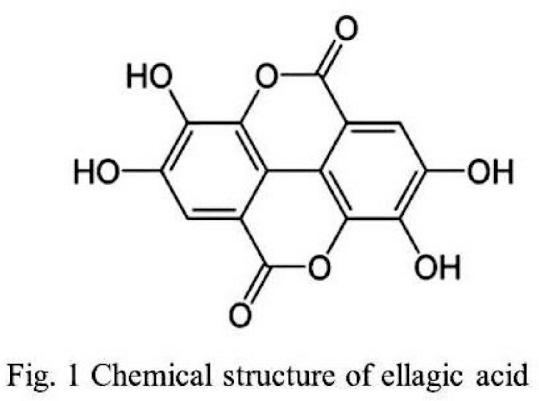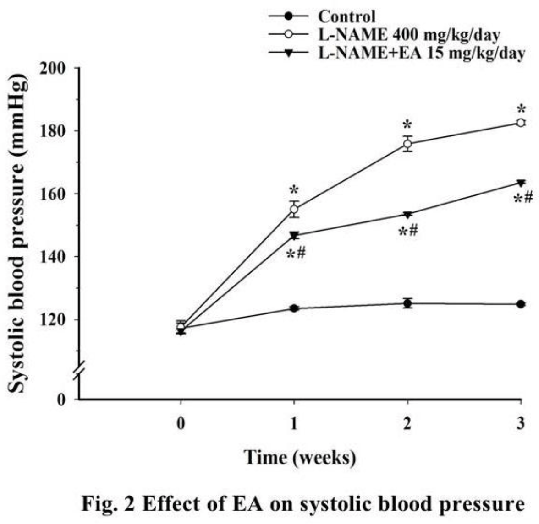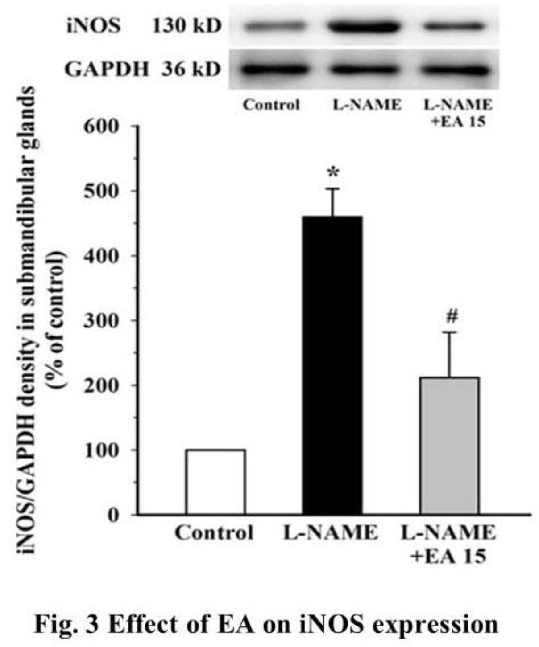Print version
Search Pub Med
- P. Prachaney1
- R. Samrid1
- P. Boonprom1
- T. Berkban2
- P. Pakdeechote3
- K. Chaisiwamongkol1
- P. Chaiyarit4. 1Anatomy
- Faculty of Medicine
- Khon Kaen University
- Khon Kaen
- Thailand
- 2Anatomy
- Faculty of Medicine
- Mahasarakham University
- Mahasarakham
- Thailand
- 3Physiology
- Faculty of Medicine
- Khon Kaen University
- Khon Kaen
- Thailand
- 4Oral Diagnosis
- Faculty of Dentistry
- Khon Kaen University
- Khon Kaen
- Thailand
| 020P London, UK Pharmacology 2017 |
Ellagic acid prevents submandibular gland inflammation in a rat model of hypertension with nitric oxide deficiency
Introduction: It has well established that administration of Nω-nitro-L-arginine methyl ester (L-NAME) results in systemic hypertension1 and vascular inflammation2. Recently, biological differences of submandibular gland between control and hypertensive rats which induced by L-NAME have been reported3. Ellagic acid (EA) is a natural polyphenolic compound (Fig. 1) present in fruits, such as strawberries, grapes, pomegranates, and nuts4, and possesses anti-inflammatory activities5. The aim of this study was to investigate whether EA can prevent submandibular gland inflammation in hypertensive condition.
Method: Hypertension was induced in male Sprague-Dawley rats by administration of L-NAME (40 mg/kg) in drinking water and simultaneously treated with EA (15 mg/kg/day, p.o.) for three weeks (n= 6/each group). Systolic blood pressure (SBP) was measured once a week using a tail cuff method. Submandibular glands weight was recorded and histomorphology was investigated by Hematoxylin and Eosin (H&E) staining. The Western blot analysis was used to determine an iNOS protein expression. Data were expressed as mean±S.E.M. Statistical analysis was tested by one-way analysis of variance (ANOVA) and followed by Student Newman-Keul's test.
Results: L-NAME treated rats has higher SBP than the values in control and L-NAME + EA group (p<0.05, Fig. 2). Submandibular gland weight in L-NAME rats was higher than that in control (0.43 g ± 0.01 vs 0.34 g ± 0.01, n=6, p<0.05) and this was prevented by EA (0.36 g ± 0.01, n=6, p<0.05). Although histomorphology by H&E did not show the difference among groups, the expression of iNOS protein in submandibular glands from L-NAME rats was significantly upregulated when compared to the control (p<0.05). Preventive treatment of EA significantly alleviated iNOS protein overexpression (p<0.05, Fig. 3).
Conclusion: These results indicate that EA can effectively prevent submandibular inflammation of rats with hypertensive condition.
References:
1. Berkban T et al. (2015). Nutrients 7(7): 5265-5280.
2. Bunbupha S et al. (2015). Clin Exp Pharmacol Physiol 42(11):1189-1197.
3. Nazeer SS et al. (2017). Analyst 142(8): 1269-1275.
4. Cerda B et al. (2005). J Agric Food Chem 53: 227-235.
5. RogerioAP et al. (2008). European Journal of Pharmacology 580: 262-270.




